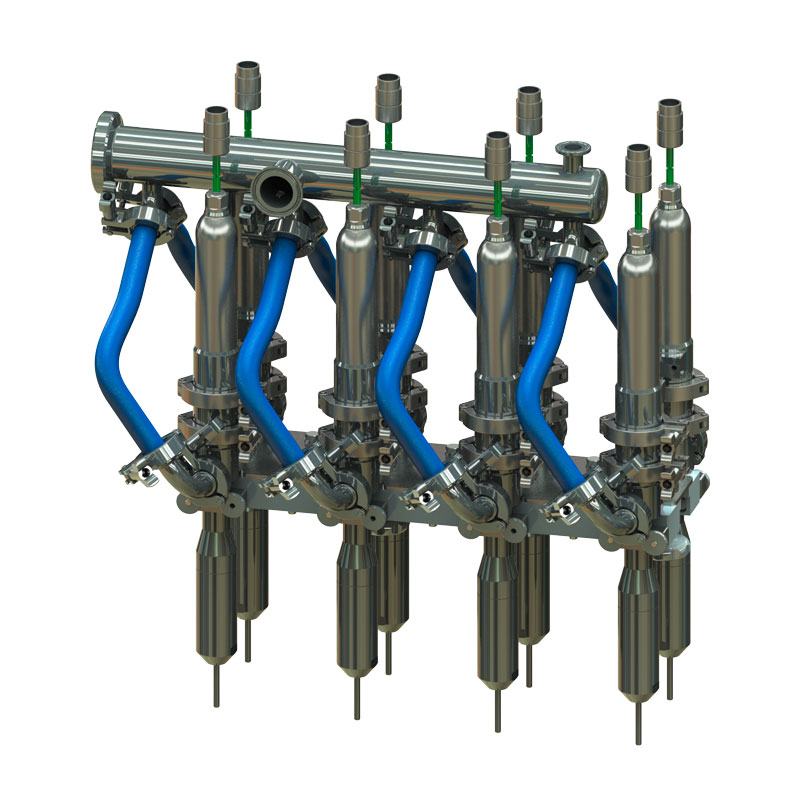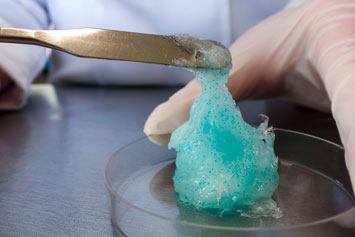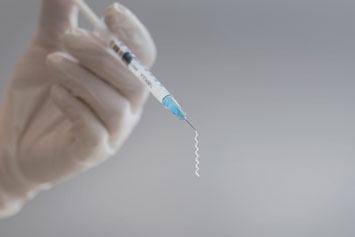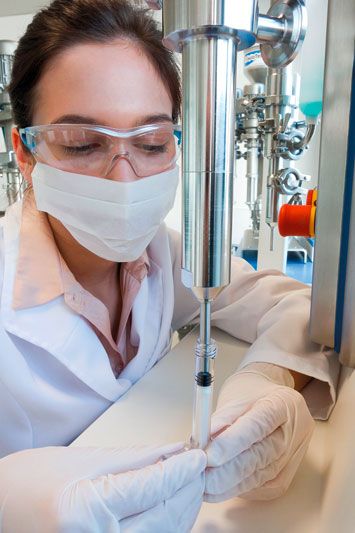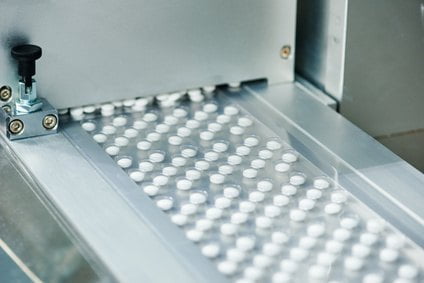Solving complex pharmaceutical production dosing tasks
Dosing and filling applications with progressive cavity pumps
Pumps adopting the progressive cavity principle within the pharmaceutical industry have mainly been used in conveying processes until today. Dispensers using the progressive cavity principle have already been a state of the art technology for many years in the automotive and electronic industries when it comes to the demanding task of dosing highly viscous material. With the Pharma Dispenser, thanks to its Hygienic Design, there is now the first dispenser according to this principle which meets GMP requirements!
Reliably safe processing even for the smallest of quantities, from 0.1 to 20 ml
The dispenser is particularly suitable for the precise small volume dispensing of medium to high viscosity fluids and pastes, as well as for sheer-sensitive products with solids or abrasive elements. Small quantities, from 0.1 ml, of highly viscous products with viscosities of up to 1,000,000 mPas can be filled with a high degree of process reliability with tolerances of +/- 1%.
This is made possible by the different chamber sizes of the rotor-stator geometry. These are between 0.35 and 5.1 ml. Depending on the volume and cycle time requirements, the appropriate chamber size is chosen. For filling of 0.1 to 20 ml, short cycle times are given for implementation in fully automated production lines. For laboratory applications or clinical trials where cycle times are less critical, larger volumes, such as 150 ml can be easily programmed and implemented by multiple rotations.
The resulting pulsation-free volume flow is also very well suited for the implementation of continuous dosing processes – a precise volume flow of 0.35 ml/min. to 816 ml/min. can be achieved.
The optimum elastomer for every application
In order to achieve optimal dosing results, much development work has to be done in material research. The selected elastomers meet common requirements such as FDA compliance, CFR 21 177.2600 or USP Class VI. The elastomer is adapted to the respective application and product in order to achieve an optimum resistance to chemicals and wear.
Implementation of GMP requirements for hygienic design and documentation
In order to meet the high cleaning requirements in production, the dispensers can be dismantled without using tools. All components which are in contact with the product can be cleaned manually or in cleaning systems, as well as in ultrasonic baths. These components can be steam sterilized in autoclaves of up to 134°C.
A comprehensive documentation for the qualification of the dispenser is available. An acceptance test certificate 3.1 (according to EN10204) is available as an option for all stainless steel parts coming into contact with the product.
ViscoTec also supports the IQ (Installation Qualification) and OQ (Functional Qualification) in the form of comprehensive qualification documentation, as well as in the implementation of on-site qualification during commissioning.
Modular construction
The Pharma Dispenser is based on ViscoTec’s Hygienic Dispenser Platform series. The requirements of the food, cosmetics and pharmaceutical industries are represented in various modules. Adapted to the requirements of the customer with regard to hygienic design, documentation, elastomer resistance and dosage volume, the optimal dispenser for the respective application can be assembled.
From the laboratory to the fully automated production plant
The Pharma Dispenser can be used flexibly to meet customer requirements from the first lab tests to the fully automated production line. For filling small batches for clinical studies or for dosing in the laboratory, a user-friendly control with a hygienically encapsulated servo drive is available for semi-automatic operation. The principle used allows the user to dose or convey products (liquid to viscous with or without solids) using only one pump.
For integration into fully automatic filling systems, a servo drive regulator can be provided. Cycle times of 0.5 seconds can be achieved for viscous products such as hyaluronic acid.
The dispenser, based on the progressive cavity principle, can be installed or retrofitted as an optional piece of equipment for hose or rotary piston pumps in filling systems, in order to be able to react flexibly to the requirements of the respective product. The dispenser is compact and weighs approximately 1.8kg with a length of 252mm. In order to benefit from the advantages of the suck-back (= by changing the direction of rotation), it is recommended to place the dispenser directly above the container to be filled. When filling under laminar air flow or in the case of space restrictions, the dispenser can also be installed centrally, next to the filling station.
For easy disassembly of the dosing block, for cleaning or replacement, changeover receptacles are also used.
A pharmaceutical production application example: Dosing suspensions
A self-dissolving tablet is a non-coated tablet which dissolves in the mouth within a few seconds and does not have to be swallowed. The manufacturing method for self-dissolving tablets is through freeze-drying. The active compound is mixed with water and water-soluble materials, such as saccharin and polymers, to form a suspension. This liquid suspension is filled with precision into preformed blisters and frozen. In the freeze-drying machine, the frozen units are dried, sublimating the water. This results in a highly porous structure that allows for decomposition in seconds.
The challenge in the conveying and dosing of this type of suspension is to avoid concentrations of the fillers of the solids-laden liquid. Due to the uniform volume flow in the progressive cavity principle, the suspension in the Pharma Dispenser remains homogeneous. The fillers are transported in their carrier medium, through the chambers between the rotor and the stator, in a pump-safe manner. Therefore, the dispenser is suitable for pulsation-free conveying and dosing of the suspension into blisters. The Pharma Dispenser can be used for feeding the suspension to the filling pumps and also as a filling pump.
In order to obtain a homogeneous suspension in the tubing as well, it is recommended to circulate the suspension permanently via a bypass. By selecting dosage needles, with a diameter of a multiple of the maximum particle size, concentrations of fillers are also avoided in the dosing needle.

